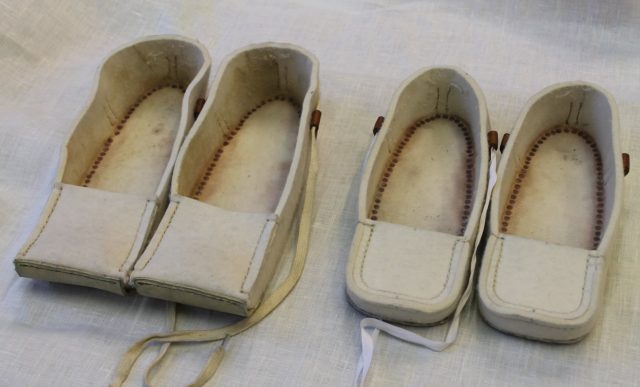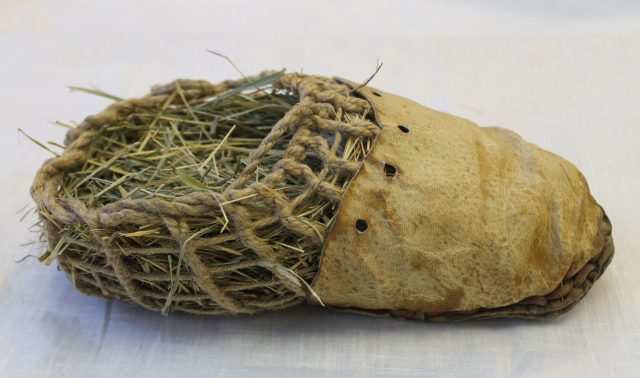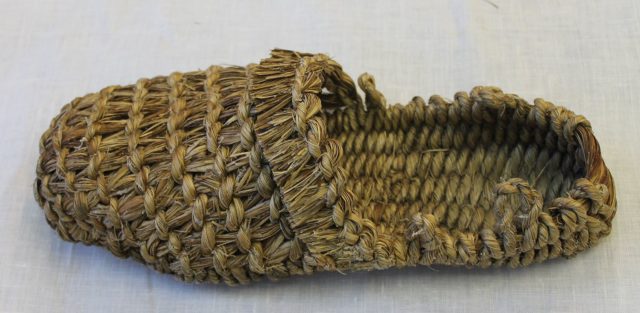Petr Hlaváček was one of the greatest shoe experts in the world and is best-known for his projects of making replicas of shoes worn by prehistoric men.
He was born in Boršice in South Moravia, located near Buchlov Castle. After graduation from the Secondary Technical School for Leather Processing Industries in Zlin, Petr started to work as a production foreman at a shoe factory. From 1979, he worked at the Faculty of Technology as a lecturer, and from 2007 until 2011 he was the Dean.

During that time, Hlaváček worked with many students and gave them lectures on the science of making shoes and their history. He was the Czech Footwear and Leather Association’s Vice President and represented his country in many international organizations including UNIDO ( the United Nations Industrial Development Organization) where he was an active member in the leather industry. Petr also participated in the group that worked on the diabetic foot and was chairman of the leather and shoe section of the Chamber of expert witnesses.
As a scientist, in 2003 he was included in the list of the hundred most important discoveries because of his project on the shoes of Ötzi the Iceman. Besides this prehistoric Iceman, Hlaváček also studied many other shoes including the sandals from Fort Rock Cave in Oregon, the footwear of the Terracotta Army, the boots of Albrecht von Wallenstein, Byzantine sandals from Turkey, etc.

He was trying to complete the missing chapter about the symbolism of sandals which can be seen on Byzantine icons in Dionysus Furn’s Handbook. In the many museums in Greece which focus on the archaeological and ancient history of the country, Petr documented the shoes of the statues. Other outstanding research projects that he made involved the shoe fragments from the Qumran Caves and the sandal of Masada in Israel. Hlaváček made replicas of these shoes, took them out for a walk, and determined if they were comfortable or not.
Ötzi’s shoes were described as uncomfortable, but Petr said that if they were good enough for this prehistoric man to wear, then they are good enough for the present foot too. According to him, the Iceman’s shoes had a good grip and were blister-free. In The Seattle Times, there is a quotation of Hlaváček saying that in the Ötzi shoes, something like freedom and flexibility can be felt. Together with his team, he made three exact replicas of these shoes and five additional pairs that fit a particular living person.

They went on a hike in the Alps to test the shoes, and they took along with them the famous Czech climber Vaclav Patek, who is also known for his design of mountain-climbing shoes.
They climbed over 4,900 feet in three days, and one of the fascinating parts was when they walked into freezing melted water with the Iceman’s shoes, they felt only a momentary chill. After their hiking trip, Patek claimed that these shoes were more comfortable than any shoes that he had worn.

Inside the shoes, there was a layer of hay that provided comfort and warmth. The team punctiliously sourced the deer, bearskin, and calf hide that were used for the soles of the shoes and managed to track down a piece of pelt that was from a bear. They were trying to tan the leather of the shoes with boiled pig’s liver and pig’s brain. This method was used in South America during the Stone Age, and it was pretty successful.
Petr claimed that the feet of the Iceman were as big as a 12-year-old boy. In 2005, he was awarded for his contribution to the development of the shoe industry by the International Union of Shoe Industry. Throughout his career, Petr worked on many types of research that changed the the understanding of footwear in history. He had worked with the EGE University Izmir, the University of Oregon, and BMI Valentia.
